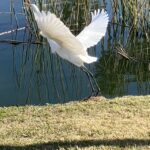The renewal of the summer season on the Idyllwild Arts campus grounds was an especially rewarding event — as noted by the players and the audience alike, on the first of the three-evening concerts on this year’s schedule.
The revamped programs from the previously cancelled season proved a great incentive. The scene was set effectively in contrast to the situation brought about by last year’s Cranston Fire and subsequent events.
The members of the Pacific Trio — pianist Edith Orloff, violinist Roger Wilkie and cellist John Walz — stood ready as ever to bring about a pleasing concert experience, and together, with the accompanying players managed an overall entertaining three nights.
On the first Wednesday night, the first two offerings — Robert Schumann’s “Fantasy Pieces” for cello and piano, and Claude Debussy’s “Sonata for Violin and Piano” — were an appropriate enough push for a start.
Orloff’s execution proved valiant despite the bandaged right wrist. It was the second part of that program that took the crown with Camille Saint-Saens’ “Fantasy for Violin and Harp” earning a special place for this listener. Violinist Stirling Trent and harpist Allison Allport provided the necessary flights of fancy in this composer’s late work (revisiting his previous compositions and invoking the French school all the way).
For a steadying conclusion, the Trio’s execution of Bohuslav Martinu’s set of five “Bergerettes” (from 1939) proved an exercise in elegance and delicacy as well as underlining the grim reality of Central Europe in that particular year.
The following program on Saturday evening was similarly structured with the short introduction provided by Schumann’s “Adagio and Allegro” for cello and piano. That led the way into Anton Arensky’s “Piano Trio in D Minor, Opus 32” from 1894. An elegiac piece, and once again, featured Orloff’s virtuoso piano accompaniment.
Following a short intermission, the concert finished off with Felix Mendelssohn’s “String Quartet in D Major, Opus 44#1,” which featured not only overwhelming string cohesion and balance (particularly in the “Presto con brio” finale) but also a redeeming effect with Trent making his presence felt as both leader and model of exemplary teaching ability.
The final program in the series began perfunctorily with three-movement “Duet, Opus 22#2” by the early 19th century cello prodigy and pedagogue Friedrich August Kummer. It proved to be an exercise in overall sonority for two cellos in tandem resulting in the finest resonance that Stephens Hall can provide.
The following selection, the 1925 “Duo for Violin and Cello” of the tragically fated Erwin Schulhoff, featured once more the soaring technical abilities of Trent, eventually giving evidence of a moderate expressionism as well as a studied pseudo-Stravinskian mannerism. To round off the series in the best way, Schumann’s ever-popular “Piano Quintet, Opus 44” was chosen. The outer movements provided the strength of conviction and slow movement and scherzo following the mid-19th century conceptual convention. After the final round of applause, one wishes for next season’s offerings — hopefully uninterrupted by climatic events or other disasters — should be well anticipated.










